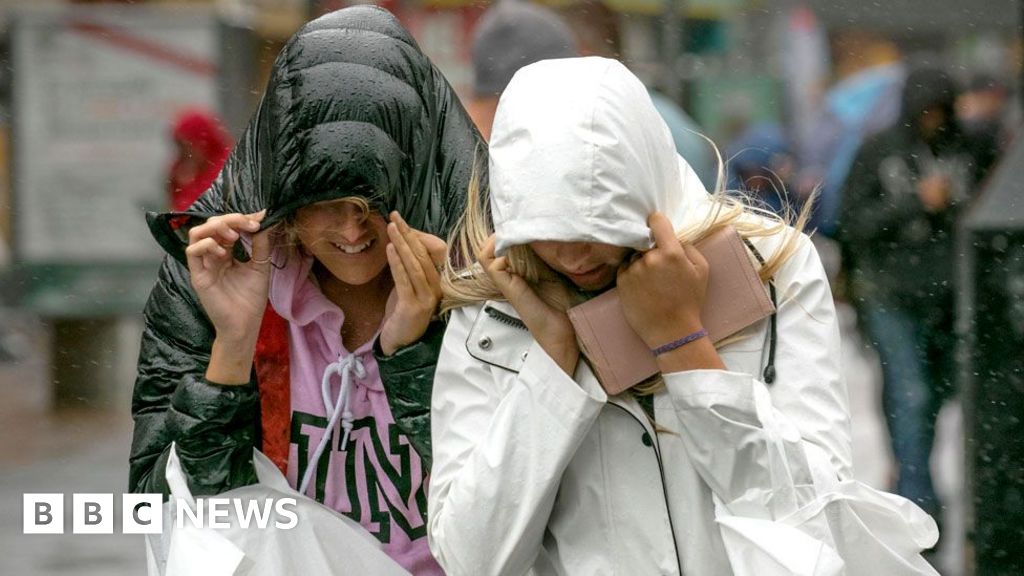Some 911 calls dialed by residents of Salt Lake City and Sandy soon may be answered by something like a robot, powered by artificial intelligence.
Faced with chronic understaffing among the ranks of its dispatchers, the 911 Communications Bureau based in Utah’s capital city wants to explore using an AI-automated sorting system to reroute a share of its nonemergency calls as a way to help human responders focus on the urgent ones.
The bureau’s director, Lisa Kehoe, said the AI software eventually could reroute up to 30% of the nearly 450,000 nonemergency calls that come in each year to the downtown dispatch center — calls, she added, that “are not necessarily life or death, but they’re certainly important.”
(Francisco Kjolseth | The Salt Lake Tribune) Salt Lake City 911 dispatcher also service Sandy.
(Francisco Kjolseth | The Salt Lake Tribune) Paul Runnoe, with Salt Lake City 911 dispatch, works at the emergency call center located inside the Public Safety Building.
The move comes as overall 911 call volumes escalate from year to year. As the city’s daytime population continues to rise along with tourist visitation, Kehoe told the City Council recently that “any method of reducing call volumes and keeping the lines open for 911 calls is a valuable option that we feel is important to pursue at this time.”
“We’d rather be ahead of it than behind it,” Kehoe said at a June 5 hearing, “as the times are moving on.”
Salt Lake City provides dispatch services to Sandy as well, so exploring AI routing for some calls could affect its residents, too.
With a yearly budget of about $11.7 million, the 911 bureau has a staff of about 100 full-time employees, with 81 of them front-line dispatchers. Fully 15 of those dispatch jobs remain unfilled and, as call volumes continue to swell, the department is turning to what Kehoe called “AI-assisted solutions.”
Making sure ‘the public isn’t shocked’
News of the move emerged as a small line item aired in hearings before Tuesday’s council approval of the city’s $2.2 billion budget for 2025-26. With the spending plan now OK’d, the 911 bureau’s purchase, testing and full implementation of the new system is now expected to take three to six months.
City officials are likely to make a formal announcement about a shift to AI once the system is in place, Kehoe said, but before it is officially launched, possibly as part of a partial test.
Council member Darin Mano said that while he supported the use of technology to optimize 911 services and public safety, “I do imagine myself being in a state of emergency and being a little bit flustered speaking with an AI responder.”
(Bethany Baker | The Salt Lake Tribune) Salt Lake City Council member Darin Mano has expressed some reservations about the AI plans for nonemergency 911 calls.
“I don’t know how we do this,” Mano said, “in a way that makes sure the public isn’t shocked at that absolutely desperate moment of their life.”
Kehoe countered that the AI system would interact only with nonemergency callers and that emergency calls to 911 would be routed only to human dispatchers. In fact, she added, “on nonemergency calls, it might detect those elevated stress levels [for callers] and it will automatically default going to a human being as well.”
“There are a lot of safeguards,” Kehoe added, “to ensure that even with the tiniest bit of doubt, we don’t have someone just sitting on the phone and not getting help.”
Translation in 36 languages — on the fly
An AI system also could solve other problems. As Salt Lake City keeps adding new residents, it is getting more diverse, Kehoe noted — resulting in more calls to 911 coming from non-English-speaking residents.
That means 911 dispatchers then must contact someone to translate the call live, which can involve a delay. “Though we answer the phone within that 15 seconds,” Kehoe said of response-time goals, “we don’t have the same guarantee” when translation services are needed.
Currently available AI systems, however, offer the prospect of translating and transcribing a 911 caller’s questions automatically — in up to 36 languages. “The smart system we’ve been looking at also does detect dialects and regions,” said Kehoe, “which is fabulous.”
Though the 911 department plans to seek new AI software through a competitive bidding process, one of its current software vendors — a Canadian company called Versaterm, which dispatches analytics and record-management systems for public safety agencies — also provides AI software for handling nonemergency calls.
City documents indicate the bureau was leaning toward Versaterm’s AI Call Triage system, which is designed to assist in handling high volumes of nonemergency calls — a preference reportedly based in part on use of some of the company’s other tools.
The Versaterm system, city memos say, would allow for tracking the effectiveness of AI call triaging, including the number and proportion of nonemergency calls diverted from live city dispatchers.
Created in 1977, Versaterm says its tools are used by public safety agencies, forensic labs, court systems, schools and other institutions, according to its website, “for more efficient and effective operations, leading to better service and more just outcomes.”
The city’s 911 bureau has been granted about $326,000 in money for the AI software purchase, as part of its new $11.7 million budget, which includes a 4% cost-of-living raise for employees.
Money for the 911 AI system won’t come from the city’s taxpayer-backed general fund, though, but instead from what’s referred to as its E-911 account, which is fed by excise taxes on cellphone bills that pay for some personnel costs and other technology upgrades.








 English (US) ·
English (US) ·